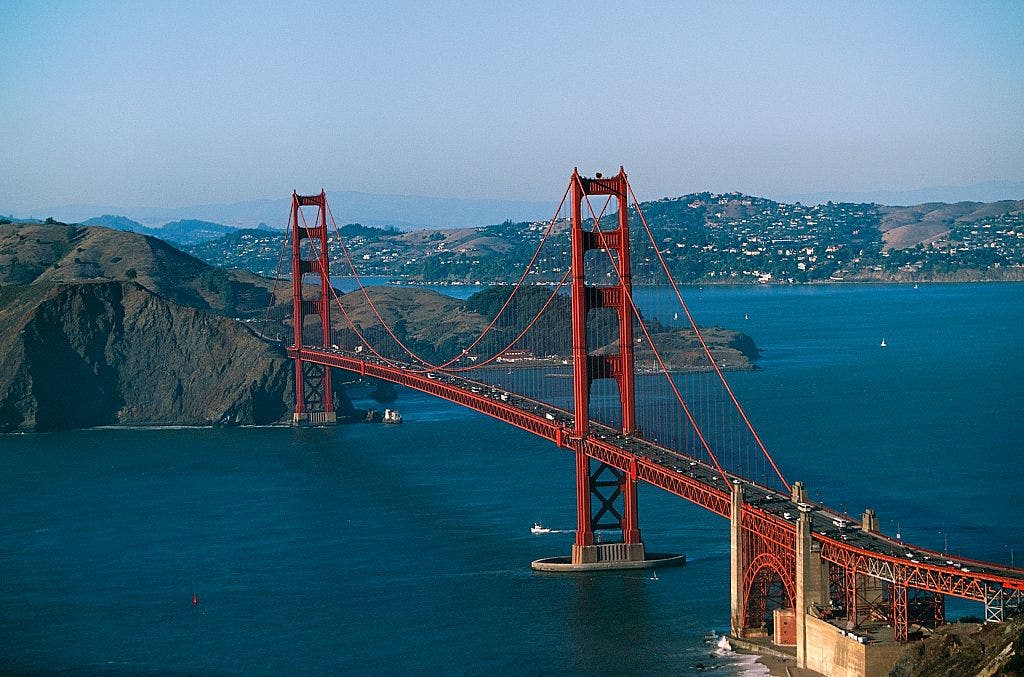On May 27, 1937, the Golden Gate Bridge opened to the public, following years of planning and construction during the Great Depression. Considered a modern feat of engineering, the bridge was hailed as the “noblest structure of steel upon this planet” by J. Lawrence Toole in the official souvenir program for the bridge’s opening. A week-long celebration dubbed “The Golden Gate Bridge Fiesta” marked the event, with San Franciscans and citizens of the Redwood Empire eagerly anticipating the bridge’s opening to the world’s traffic.
San Francisco Mayor Angelo Joseph Rossi welcomed the completion of the bridge as a symbol of unity and brotherhood, thanking those who financed the project. Although primarily designed for motor vehicle traffic, the first day of the bridge’s opening was reserved for pedestrians. An estimated 18,000 people gathered to cross the bridge on foot before it officially opened for vehicle traffic, with 15,000 people per hour crossing the bridge on opening day, and each pedestrian charged a toll of 25 cents. Today, walking across the Golden Gate Bridge is free, but cars pay a toll of $9.40 to travel into San Francisco.
The Golden Gate Bridge spans 1.7 miles, with the longest single span in the world at the time of its opening. Engineer J. Lawrence Toole described it as an engineering achievement without equal, with its size, beauty, and grace leaving an imperishable memory on all who see it. Several “firsts” in the bridge’s history occurred on May 27, including a man walking across the bridge on stilts, two sisters rollerskating across, and an 11-year-old child being lost and found on the bridge. The bridge’s opening marked a significant milestone in the city’s history and has continued to be a popular landmark for visitors and residents alike.
The construction and opening of the Golden Gate Bridge during the Great Depression represented a triumph of human ingenuity, courage, and will. The completion of the bridge was viewed as a monumental achievement after years of planning and labor, with the structure becoming a symbol of strength and unity. As thousands of pedestrians crossed the bridge on its opening day, the event marked a historic moment in the city’s history and a testament to the resilience of the American spirit during challenging times. The Golden Gate Bridge continues to stand as a lasting tribute to the innovation and dedication of those who made its construction possible.
The Golden Gate Bridge’s opening ceremony featured speeches and celebrations that highlighted the significance of the structure as a symbol of connection and progress. San Francisco Mayor Angelo Joseph Rossi expressed gratitude to those who contributed to financing the bridge, acknowledging the importance of the project in uniting people and fostering goodwill. The bridge’s long-span design and striking appearance captured the imagination of visitors and residents alike, becoming an iconic symbol of San Francisco’s landscape and a popular destination for tourists. The opening day festivities, including the toll booths and hot dog stands, added to the festive atmosphere and excitement surrounding the bridge’s completion.
Walking across the Golden Gate Bridge has become a popular activity for visitors and locals alike, offering stunning views of the bay and city skyline. The bridge’s historical significance and architectural beauty continue to attract millions of visitors each year, with many marveling at its engineering achievements and design. As a vital transportation link between San Francisco and Marin County, the bridge serves as a crucial artery for commuters and tourists, bridging the gap between the two regions. The legacy of the Golden Gate Bridge lives on as a symbol of innovation, progress, and unity, embodying the spirit of determination and collaboration that made its construction possible.


